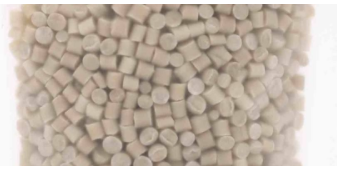
Privacy statement: Your privacy is very important to Us. Our company promises not to disclose your personal information to any external company with out your explicit permission.
Sinds PHB in 1925 werd ontdekt in B. megaterium, is het bestaan ervan bevestigd in meer dan 60 soorten bacteriën, zoals Alcaligenes (Alcaligenes), Azotobacter (Azotobacter) en Pseudomonas (pseudomonas). Spp.), Enz. In sommige G + en G-bacteriën, evenals in sommige fotosynthetische anaëroben en chemo-autotrofe Rastonia eutropha (Rastonia eutropha), is een verscheidenheid aan verbindingen gevonden vergelijkbaar met PHB, gezamenlijk polyhydroxyketens genoemd Alkaanzuur (of polyhydroxyalkanoaat, PHA), het verschil tussen hen en PHB zit alleen in de methylgroep, als de methylgroep wordt vervangen door R (afkorting voor radicaal, verwijst naar een bepaalde groep), dan wordt PHA. Omdat PHB en PHA biosynthetische polymeren zijn, die niet giftig, plastic en gemakkelijk afbreekbaar zijn, ontwikkelen ze krachtig hoogwaardige grondstoffen voor de fabricage van medische plastic dozen, fastfooddozen, enz., En proberen ze de huidige te overwinnen ernstige schade "Witte vervuiling" (verwijst naar milieuvervuiling veroorzaakt door een groot aantal niet-afbreekbare plastic verpakkingsmaterialen en producten).
PHB is een thermoplastische polyester en de fysische eigenschappen en structuur zijn vergelijkbaar met die van polypropyleen (smeltpunt, glastemperatuur, kristalliniteit, treksterkte, enz.). De chemische structuur is regelmatig. De kristalliniteit is zo hoog als 60 ~ 80%, de relatieve dichtheid is hoog, de zuurstofdoorlaatbaarheid is laag, het is bestand tegen ultraviolette straling en heeft optische activiteit, maar het is bros en gemakkelijk te breken.
|
Proterties |
Unit |
Tes method |
Results |
|
Specific Gravity(20℃) |
g/cm3 |
GB/T1033-2088 ISO1183:2004 |
1.2~1.4 |
|
Melt point |
℃ |
GB/T19466.3-2004 ISO11357-3:1999 |
120~140 |
|
Melt flow rate |
g/10min |
GB/T3682-2000 ISO1133:1997 |
1.0~5.0 |
|
Tensile strength |
MPa |
GB/T1040.2-2006 ISO527-2:1993 |
≥12.0 |
|
Elongation at Break |
% |
GB/T1040.2-2006 ISO527-2:1993 |
≥50 |
|
Flexural strength |
Mpa |
GB/T9341-2008 ISO178--2001 |
≥20 |
|
Flexural modulus,MPa |
Mpa |
GB/T9341-2008 ISO178--2001 |
≥1000 |
|
Vicat Softening Temperature |
℃ |
GB/T1633-2000 ISO306:1994 |
50~100 |
|
Loss on drying |
% |
|
≤0.1 |
|
Ash content |
% |
GB/T9345.1-2008 ISO3451-1:1997 |
depends |
|
carbon content |
% |
ASTM D6866 |
90 |



Privacy statement: Your privacy is very important to Us. Our company promises not to disclose your personal information to any external company with out your explicit permission.

Fill in more information so that we can get in touch with you faster
Privacy statement: Your privacy is very important to Us. Our company promises not to disclose your personal information to any external company with out your explicit permission.